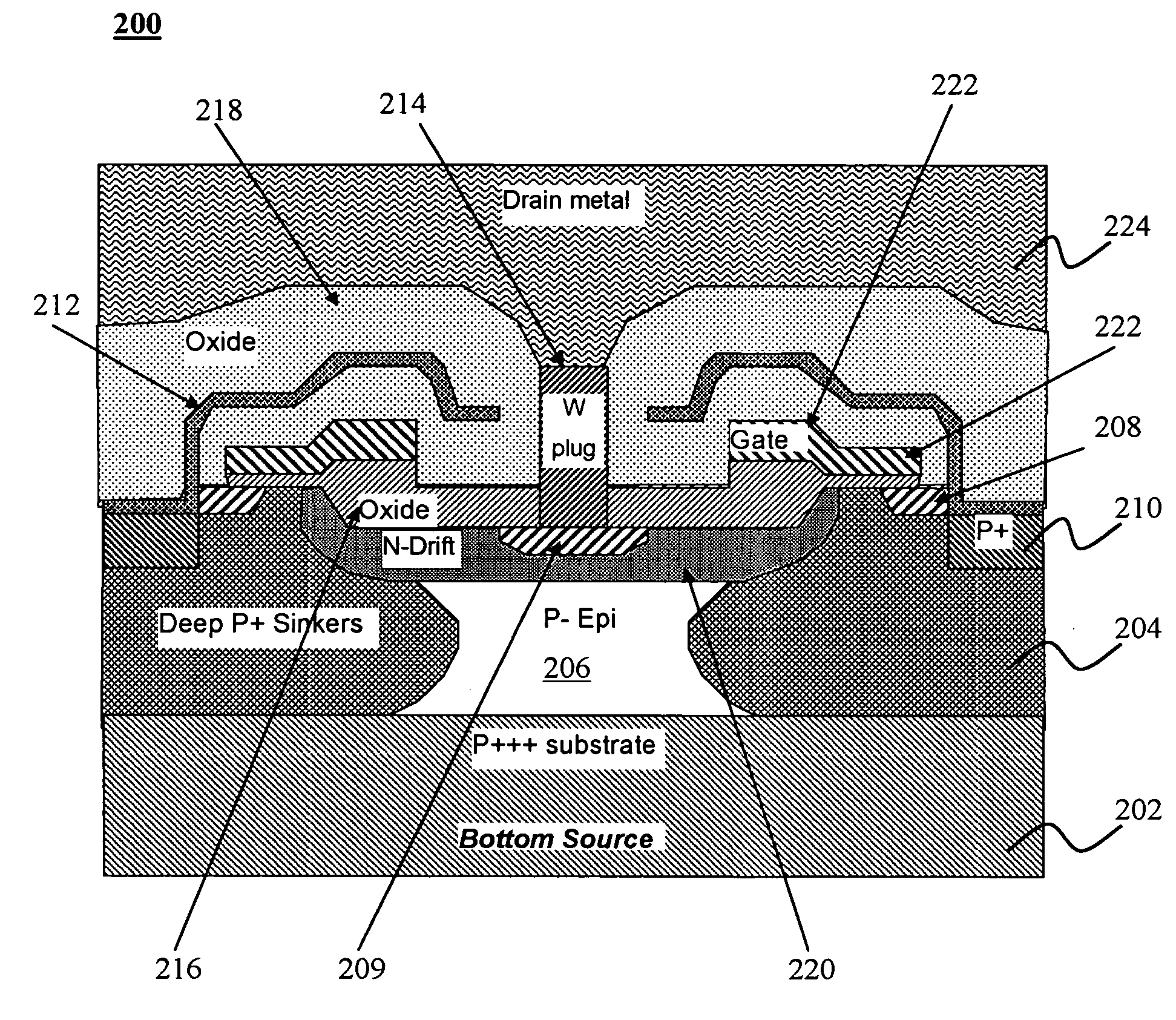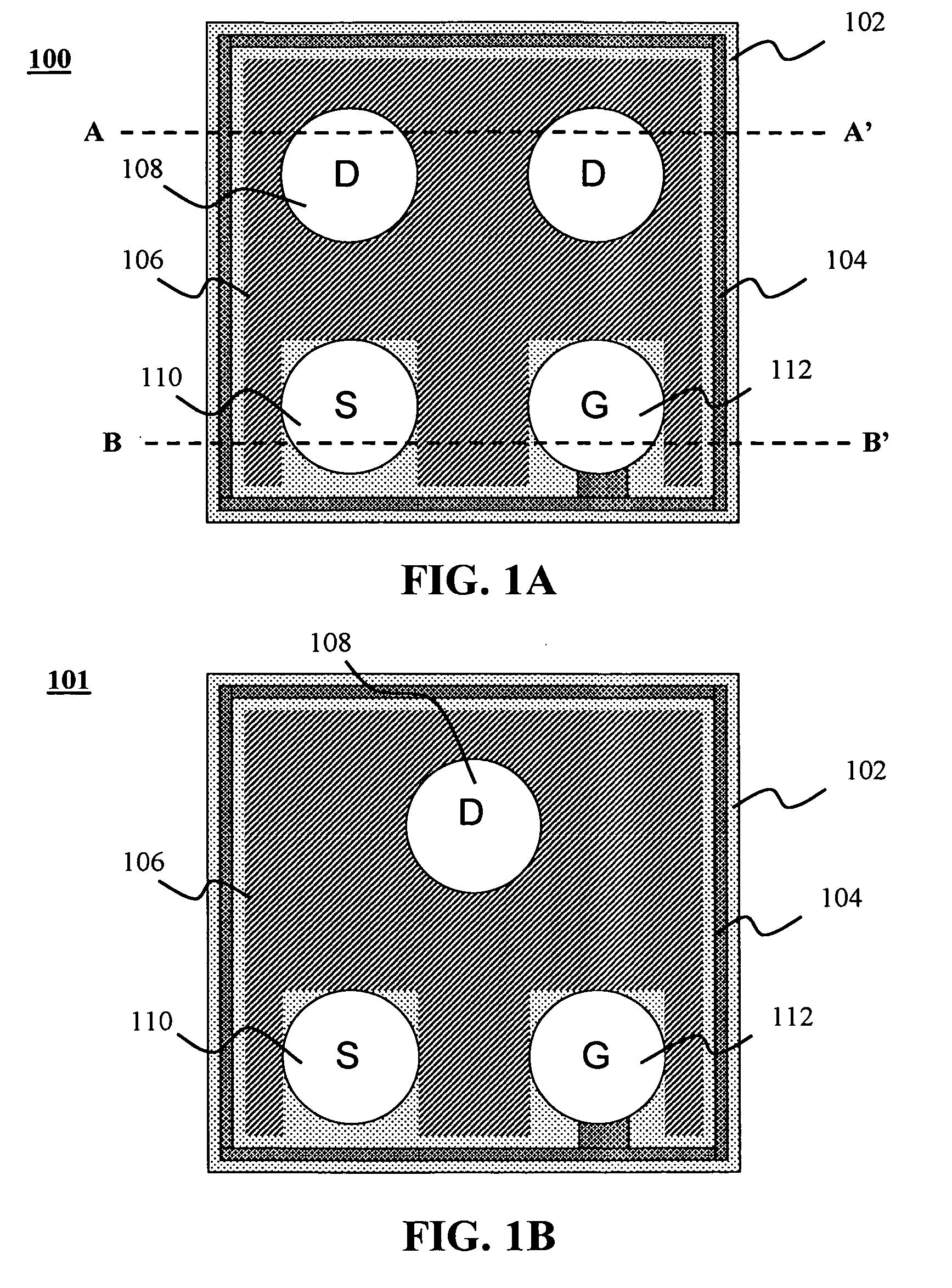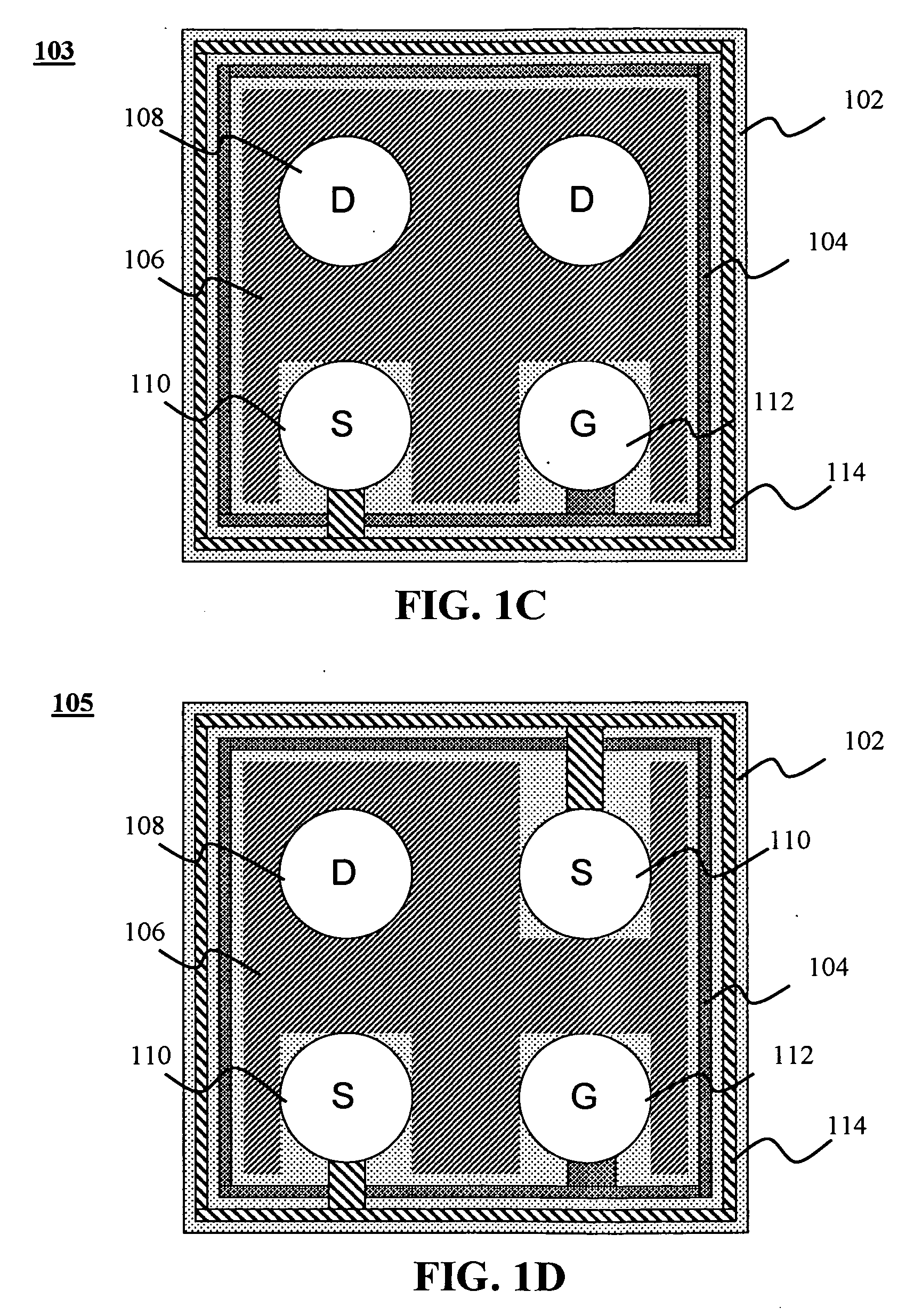True csp power mosfet based on bottom-source ldmos
a bottom-source metal oxide semiconductor and mosfet technology, applied in the direction of transistors, semiconductor devices, electrical apparatus, etc., can solve the problems of parasitic parasitic factors such as resistance, capacitance and inductance associated with conventional packaging techniques, and further reduce the source inductance and resistance of semiconductor power devices including the source inductance, so as to reduce the resistance and inductance of the resulting device package, the effect of improving shielding
- Summary
- Abstract
- Description
- Claims
- Application Information
AI Technical Summary
Benefits of technology
Problems solved by technology
Method used
Image
Examples
Embodiment Construction
[0030]Although the following detailed description contains many specific details for the purposes of illustration, anyone of ordinary skill in the art will appreciate that many variations and alterations to the following details are within the scope of the invention. Accordingly, the examples of embodiments of the invention described below are set forth without any loss of generality to, and without imposing limitations upon, the claimed invention.
[0031]Embodiments of the present invention provide a true-CSP discrete MOSFET device using bottom-source devices with all drain, source and gate connections for the package located on a front face of the die.
[0032]According to embodiments of the present invention, a semiconductor package may comprise a semiconductor substrate, a plurality semiconductor devices formed on the semiconductor substrate, a source region disposed on a bottom of the substrate that is common to all the devices in the plurality. Each semiconductor device in the plur...
PUM
 Login to View More
Login to View More Abstract
Description
Claims
Application Information
 Login to View More
Login to View More - R&D
- Intellectual Property
- Life Sciences
- Materials
- Tech Scout
- Unparalleled Data Quality
- Higher Quality Content
- 60% Fewer Hallucinations
Browse by: Latest US Patents, China's latest patents, Technical Efficacy Thesaurus, Application Domain, Technology Topic, Popular Technical Reports.
© 2025 PatSnap. All rights reserved.Legal|Privacy policy|Modern Slavery Act Transparency Statement|Sitemap|About US| Contact US: help@patsnap.com



